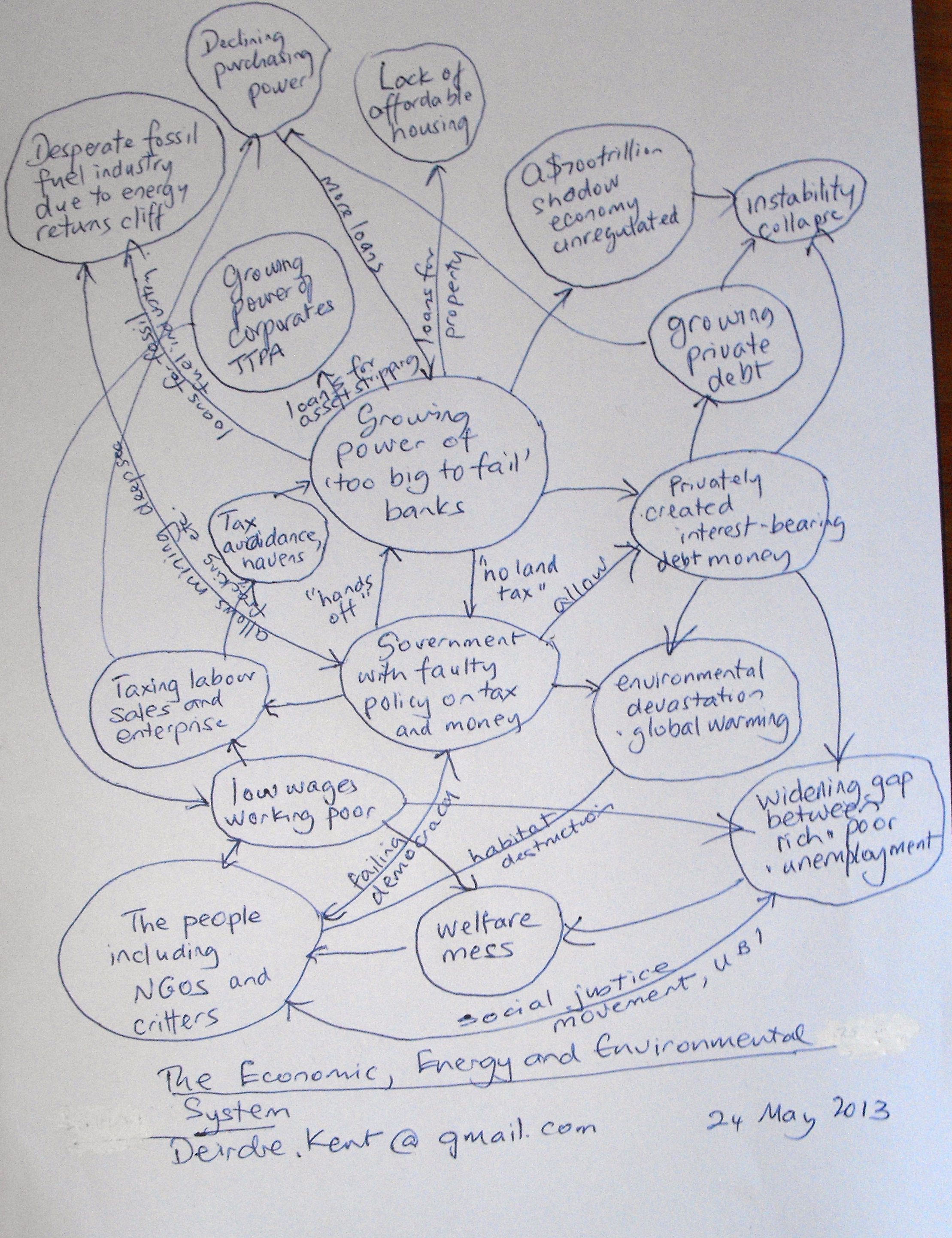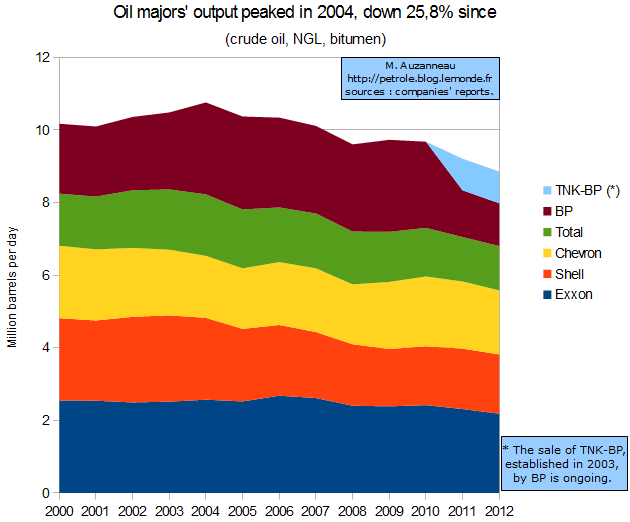
On 1 February when I received a letter from the Minister of Finance on the matter of the Chicago Plan Revisited I learnt that New Zealand banks were working quietly behind the scenes with the Reserve Bank of New Zealand on a depositor bailout scheme probably unique in the world. ‘Open Bank Resolution’ was its bland and harmless name and it had apparently been discussed during 2011 when public submissions had been invited. Registered banks with $1 billion or more in assets were required to work with the Reserve Bank to put their IT systems in place by 30 June, 2013. If a bank was in distress, accounts would be frozen overnight, while liquidators decided how much of a ‘haircut’ to give the accounts before releasing them the next day.
Yet we had seen nothing in the news media. Nothing. Suddenly we woke up to the fact that as depositors we were to bail out a failing bank.
At the height of the 2008 Global Financial Crisis, the New Zealand government guaranteed all bank deposits and this scheme stopped at the end of 2011. But during 2009 many South Canterbury Finance investors greatly benefitted from it. Their finance company, into which investors had poured money after the government guarantee, had gone belly up and the taxpayer coughed up to the tune of $1 billion.
This experience turned the government against guaranteeing bank deposits. They didn’t want private deposit insurance either, arguing it was a cost to investors. So the Reserve Bank of New Zealand set about inventing a new scheme (or rather revisiting one they started formulating a few years earlier), but when they finally told the public about OBR in November 2012, their one media statement sank without trace. Perhaps they naïvely believed mum and dad bank customers would read their website, on which they now have plenty of information on Open Bank Resolution. Banks, naturally, didn’t tell their customers.
On 8 February therefore the New Economics Party launched a petition. We decided it was best to ask for a Parliamentary Enquiry into the best methods of making banks stable. We added that New Zealand could consider The Chicago Plan Revisited. We said we didn’t want either taxpayer bailout or customer bailout of a failing bank. We believe banks should be stable in the first place. Such radical monetary reform has to be done internationally and simultaneously. Those who have collected petition signatures have found it relatively easy.
In promoting this petition we cooperated with members of the Green Party, the Awareness Party, Positive Money NZ, the Democrats for Social Credit, The Maori Party and the Mana Party.
We created a Facebook page at http://tinyurl.com/ab9qc7w and started an online petition. For five weeks it was an uphill battle to get any publicity.
 But on the weekend of March 16-17 the Cyprus news broke. Suddenly depositor bailout of banks was in the news. Over the next two weeks I was completely obsessed with the daily dramas in Cyprus and Brussels, I tweeted relentlessly to inform my twitter friends that depositor bailout was also planned for New Zealand. Our Facebook page became very useful to share news.
But on the weekend of March 16-17 the Cyprus news broke. Suddenly depositor bailout of banks was in the news. Over the next two weeks I was completely obsessed with the daily dramas in Cyprus and Brussels, I tweeted relentlessly to inform my twitter friends that depositor bailout was also planned for New Zealand. Our Facebook page became very useful to share news.
It is wonderful how networks work. When the newsletter editor of our local Transition Town group put our information about Open Bank Resolution in their publication, a friend rang me for more information. She then penned an excellent letter to the Dominion Post, which was published as the top letter on March 18. The following day the Dominion Post published a comprehensive article on Open Bank Resolution, and more facts emerged. The New Zealand Herald and the Press followed, then radio and TV.
On March 19, the Greens, who had a policy opposing Open Bank Resolution sitting quietly on their books, called for the Government to drop their Cyprus style solution. Saver bailout became the focus of a series of questions in Parliament from Russell Norman, leader of the Greens, where it emerged that the Government was fully behind the scheme and didn’t want a bar of taxpayer bailout or government guarantees. The Minister standing in for the Minister of Finance that day described OBR as “a brilliant policy.” He emphasised it would be a one off haircut overnight, enabling the bank to open the next day. The depositors in the troubled bank would then have the rest of their money Government guaranteed. The Minister couldn’t be pinned down on what percentage would be confiscated.
The Greens also came out in favour of Government guarantees. The Labour Party, who often follow the lead of the Greens, said they would guarantee the first $30,000. They said if it was good enough for overseas lenders of covered bonds to be protected it was good enough for NZ households too. NZ First reiterated their long held interesting policy they would only guarantee deposits in New Zealand owned banks. In answer to my letters, I am told the TSB and the Co-operative Bank have no covered bonds or other protected assets. Kiwbank, however is getting in to both covered bonds and mortgage backed securities (RMBS). The letter said “In addition to the covered bond assets Kiwibank has transferred approximately $600m into a RMBS programme.“
The small credit union sector won’t be required to comply.
Academics have not been inactive in this matter. Geoff Bertram and David Tripe wrote an article in the November 2012 edition of Policy Quarterly journal of Victoria University’s Institute for Governance and Policy studies (http://bit.ly.10c3750) shows how secured creditors are gaining more protection for themselves should a bank collapse. Among these are holders of Covered Bonds, now legal in New Zealand and used by the four major banks. These bonds are ring fenced high quality housing loans. New Zealand’s big four banks have borrowed more than NZ$11 billion through covered bond issues, mainly to overseas institutional investors, since BNZ became the first to do so in 2010.
Even the publicly owned bank Kiwibank is now getting into them, with the selling of their first covered bonds on March 25. Interest.co.nz reports “Kiwibank has turned to Switzerland for its first covered bond issue, borrowing 150 million Swiss francs (about NZ$188 million). Covered bonds were made legal in 2012.” Gareth Vaughan of the same website wrote an excellent article (Mar 25, 2012) on what it means for your mortgage.
Tripe and Bertram list five other types of assets which would not be available to bank liquidators. These include loans sold back to the parent bank, residential mortgage backed securities sold to third parties, repos, assets pledged as collateral for derivatives, other derivatives and intangible assets not available to liquidators. Their calculation for a typical bank is that after allowing for secured depositors, approximately only 58% of deposits could still be available to liquidators. Such an alarming figure indicates the study needs repeating. Whatever the figure for the actual bank in distress, it means unsecured creditors bear a large share of the losses.
There is something else the Reserve Bank appears to have overlooked. Business commentator Rod Oram has pointed out that, after a bank had been liquidated and deposits government guaranteed, bank customers from other banks would transfer to the bank where their deposit was safe.
The Reserve Bank tells us there is no need for legislation to authorise Open Bank Resolution. But is it legal? Apparently when you deposit money in a bank you forfeit ownership of money and gain ownership of a claim against the bank – a claim for instant repayment of money but a claim nonetheless.
Here is a quote from a House of Lords decision Foley v Hill (1848).
The money paid into the banker’s, is money known by the principal to be placed there for the purpose of being under the control of the banker; it is then the banker’s money; he is known to deal with it as his own; he makes what profit of it he can, which profit he retains to himself, paying back only the principal, according to the custom of bankers in some places, or the principal and a small rate of interest, according to the custom of bankers in other places. The money placed in the custody of a banker is, to all *1006 intents and purposes, the money of the banker, to do with it as he pleases; he is guilty of no breach of trust in employing it; he is not answerable to the principal if he puts it into jeopardy, if he engages in a hazardous speculation; he is not bound to keep it or deal with it as the property of his principal, but he is of course answerable for the amount, because he has contracted, having received that money, to repay to the [37] principal, when demanded, a sum equivalent to that paid into his hands.
Sue Hamill of Positive Money NZ asked the Reserve Bank if this decision is the common law in New Zealand who confirmed that the common law she had quoted was still standing. The email (27/3/2013) from Sonia Speedy of RBNZ said
“Our legal advice is that the case you mention is part of the common law in New Zealand. In essence it confirms that a bank/customer relationship, in respect of a deposit, is a contractual one of debtor/creditor. In that sense the bank is liable to repay the customer the sum of the deposit. The case confirms there is no fiduciary relationship between the two parties. It also confirms the customer/creditor has no right to challenge the use put by the bank to the money deposited with it.”
 Because New Zealanders are dependent on the four big Australian owned banks, ASB, ANZ, Westpac and BNZ, I thought it interesting to investigate their ownership and their directors. (The ASB is owned by Commonwealth Bank and the BNZ is owned by NAB). It seems in each case four of their major shareholders are HSBC, JP Morgan, NAB Holdings and Citigroup. Their directors come from banking, real estate, infrastructure, contractors, building, aluminium, communication, computing, investment, asset management, gambling, alcohol, aviation, food and beverages, fossil fuels, mills, clothing and mining. Their lawyer directors are in the field of tax, litigation or mergers and acquisition. And they have their fair share of academics and former government regulators and Central Bankers.
Because New Zealanders are dependent on the four big Australian owned banks, ASB, ANZ, Westpac and BNZ, I thought it interesting to investigate their ownership and their directors. (The ASB is owned by Commonwealth Bank and the BNZ is owned by NAB). It seems in each case four of their major shareholders are HSBC, JP Morgan, NAB Holdings and Citigroup. Their directors come from banking, real estate, infrastructure, contractors, building, aluminium, communication, computing, investment, asset management, gambling, alcohol, aviation, food and beverages, fossil fuels, mills, clothing and mining. Their lawyer directors are in the field of tax, litigation or mergers and acquisition. And they have their fair share of academics and former government regulators and Central Bankers.
One can’t help but get the feeling that the interconnectedness of all this is overwhelming. If banks go down, the pension funds of the world go down and so does the economy.
But how likely is it that a bank will fail in New Zealand? Financial adviser Chris Lee has told a friend who asked, “In my opinion a major bank wipeout would rank in likelihood with global nuclear war – possible but hopefully unlikely. The chance of one lesser bank failing is more realistic.” (3 April private email)
But according to an IMF working paper[1] on the vulnerability of NZ banks (Jan 2013), the big four banks have 90% of the bank assets in New Zealand and together their assets amount to 160% of our GDP. “The banks’ large exposure to highly indebted household and sizeable short term offshore borrowing are key vulnerabilities.” The big four account for 95% of the residential mortgage market. A rise in mortgage rates together with an increase in unemployment could lead to an increase in nonperforming loans. A large fall in commodity prices would impair the quality of agricultural loans. It says our house prices are 10-20% too high. Since that paper the Auckland house prices have risen again.
The big four are all making healthy profits. In November it was announced that the BNZ, ANZ/National, Westpac and ASB had made a combined $3.4 billion profit after tax in New Zealand, up an average of 20 percent on 2011. This is an average of $772 profit for every person in New Zealand, with a large chunk of it heading across the Tasman.
So New Zealand is an interesting case. As at the end of 2012 there were total deposits of $115.2 billion in our banks. Will a crisis in one of our banks test out the political viability of our Open Bank Resolution proposal as did the first Cyprus/Brussels solution? Will our small depositors have their savings confiscated?
We watch of course the unfolding drama in Europe and see whether the Cyprus solution is going to be a blueprint for other countries in crisis. Those who have the stomach for it might be at this moment monitoring Slovenia. Or Greece, or Spain, or France or Lichtenstein. Obviously each country is different.
The banks operating in New Zealand are part of a larger global system. While their capital adequacy is high at 13 percent in 2012 and the big four have proved resilient in the past, speeches and articles from our Reserve Bank indicate there is no certainty. They even point out that few foresaw the Global Financial Crisis either and we are in new territory nowadays.
According to IMF data, there were 145 banking crises, 208 monetary crashes and 72 sovereign debt crises between 1970 and 2010. This represents a total of 425 systemic crises, an average of more than 10 countries getting into trouble every year. This was even before the Global Financial Crisis and illustrates the fragility and structural flaws of the banking system. Time for 100% backing for deposits, as the Chicago Plan Revisited explains.
We will have to watch our house prices, and dairy and meat prices. The IMF paper says, “A hard landing in China, and thus Australia, would consequently reduce demand for New Zealand exports, worsen terms of trade and could trigger a sudden decline in house prices.”
So my concerns about Open Bank Resolution are:
- While it is fine to argue that it is preferable to a bank closing after failure and preferable to taxpayer bailout, it frightens bank depositors and is a political lemon. The idea of confiscating the money of small bank depositors has been tested in Cyprus and found wanting.
- The Reserve Bank doesn’t appear to have thought through the situation that would arise when the failed bank becomes the only one to have Government deposit guarantees. More homework boys and girls!
- In the case of Westpac, ASB, ANZ and BNZ, depositors will bear the main brunt of the loss, as there are many types of bank assets unavailable to liquidators. This whole field needs more discussion and clarification and bank customers should write to the CEO of their bank to find out who is ahead of them in the event of liquidation.
- It could become an election issue in 2014.
- The common law on this topic needs to be known and the law needs to be obeyed.
Deirdre Kent, author of Healthy Money Healthy Planet –Developing Sustainability through New Money Systems
[1] New Zealand Banks’ Vulnerabilities and Capital Adequacy by Byung Kyoon Jang and Mashiko Kataoka. IMF Working paper/13/7. January 2013












